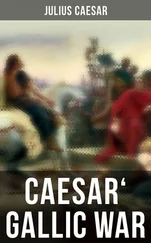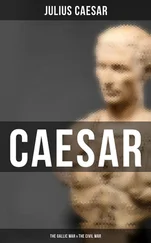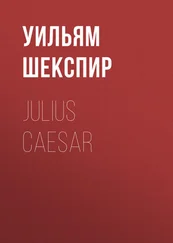Napoleon III - History of Julius Caesar Vol. 2 of 2
Здесь есть возможность читать онлайн «Napoleon III - History of Julius Caesar Vol. 2 of 2» — ознакомительный отрывок электронной книги совершенно бесплатно, а после прочтения отрывка купить полную версию. В некоторых случаях можно слушать аудио, скачать через торрент в формате fb2 и присутствует краткое содержание. Жанр: foreign_antique, foreign_prose, Биографии и Мемуары, на английском языке. Описание произведения, (предисловие) а так же отзывы посетителей доступны на портале библиотеки ЛибКат.
- Название:History of Julius Caesar Vol. 2 of 2
- Автор:
- Жанр:
- Год:неизвестен
- ISBN:нет данных
- Рейтинг книги:4 / 5. Голосов: 1
-
Избранное:Добавить в избранное
- Отзывы:
-
Ваша оценка:
- 80
- 1
- 2
- 3
- 4
- 5
History of Julius Caesar Vol. 2 of 2: краткое содержание, описание и аннотация
Предлагаем к чтению аннотацию, описание, краткое содержание или предисловие (зависит от того, что написал сам автор книги «History of Julius Caesar Vol. 2 of 2»). Если вы не нашли необходимую информацию о книге — напишите в комментариях, мы постараемся отыскать её.
History of Julius Caesar Vol. 2 of 2 — читать онлайн ознакомительный отрывок
Ниже представлен текст книги, разбитый по страницам. Система сохранения места последней прочитанной страницы, позволяет с удобством читать онлайн бесплатно книгу «History of Julius Caesar Vol. 2 of 2», без необходимости каждый раз заново искать на чём Вы остановились. Поставьте закладку, и сможете в любой момент перейти на страницу, на которой закончили чтение.
Интервал:
Закладка:
204
Which formed the present Upper Alsace.
205
We look upon it as certain, from the tenth chapter of Book IV. of the “Commentaries,” that the Triboci occupied also the left bank of the Rhine. We therefore naturally place among this German people the spot where the army of Ariovistus was assembled. Moreover, to understand the campaign about to be related, we must not seek this place, in the valley of the Rhine, higher than Strasburg.
206
In the speech which Dio Cassius puts in the mouth of Cæsar before entering on the campaign against Ariovistus, he dilates upon the right which the governor of the Roman province has to act according to circumstances, and to take only his own advice. This speech is naturally amplified and arranged by Dio Cassius, but the principal arguments must be true. (Dio Cassius, XXXVIII. 41. — De Bello Gallico , I. 33, 34, 35.)
207
De Bello Gallico , I. 36.
208
Since this information was given to Cæsar by the Treviri, it is certain that the Suevi assembled on the Rhine, opposite or not far from the country of the Treviri, and, in all probability, towards Mayence, where the valley of the Maine presents a magnificent and easy opening upon the Rhine.
209
Between Tanlay and Gland, the Roman way is still called the Route de César . ( See the map of the Etat-Major. )
210
To explain this rapid movement upon Besançon, we must suppose that Cæsar, at the moment when he received news of the march of Ariovistus, believed him to be as near Besançon as he was himself. In fact, Cæsar might fear that during the time the news had taken to reach him, the German king, who had already advanced three days’ journey out of his territory, might have arrived in the neighbourhood of Mulhausen or Cernay. Now Cæsar was at Arc-en-Barrois, 130 kilomètres from Besançon, and the distance from this latter town to Cernay is 125 kilomètres.
211
The “Commentaries” give here the erroneous number DC: the breadth of the isthmus which the Doubs forms at Besançon cannot have undergone any sensible variation; it is at present 480 mètres, or 1,620 Roman feet. The copyists have, no doubt, omitted an M before DC.
212
De Bello Gallico , I. 38.
213
“ … qui ex urbe, amicitiæ causa, Cæsarem secuti, non magnum in re militari usum habebant.” ( De Bello Gallico , I. 39.) – We see in the subsequent wars Appius repairing to Cæsar to obtain appointments of military tribunes, and Cicero recommending for the same grade several persons, among others, M. Curtius, Orfius, and Trebatius. “I have asked him for a tribuneship for M. Curtius.” ( Epist. ad Quint. , II. 15; Epist. Famil. , VII. 5, a letter to Cæsar.) Trebatius, though a bad soldier, was treated with kindness, and at once appointed a military tribune. “I wonder that you despise the advantages of the tribuneship, especially since they have allowed you to dispense with the fatigues of the military service.” (Cicero, Epist. Famil. , VII. 8.) – “Resign yourself to the military service, and remain.” (Cicero, Epist. Famil. , VII. 11.) – Trebatius appeared little satisfied, complained of the severity of the service, and, when Cæsar passed into Britain, he prudently remained on the Continent.
214
Dio Cassius, XXXVIII. 36.
215
This shows that then, in Italy, a great number of slaves were Germans.
216
This Latin phrase indicated the putting the troops in march.
217
De Bello Gallico , I. 41.
218
There has been much discussion on the meaning of the words millium amplius quinquaginta circuitu . Some pretend that the number of fifty miles means the whole distance, and that thus Cæsar would have taken seven days to travel fifty miles, which would make about seven kilomètres a day: this supposition is inadmissible. Others pretend, on the contrary, that we must add fifty miles to the direct distance. This last interpretation is refuted by a passage in the “Commentaries” ( De Bello Civili , I. 64). We read there, Ac tantum fuit in militibus studii, ut, millium vi. ad iter addito circuito , &c. This shows that when Cæsar means to speak of a turn of road, to be added to the total length of the route, he is careful to indicate it. We consider it more simple, therefore, to admit that the fifty miles are only a part of the distance performed during the seven days’ march; that is, that after making a circular détour of fifty miles, which required three or four days, Cæsar had still to march some time before he met the enemy, following the direct road from Besançon to the Rhine. The study of the ground completely justifies this view, for it was sufficient for Cæsar to make a circuit of fifty miles (or seventy-five kilomètres) to turn the mass of mountains which extends from Besançon to Montbéliard.
219
It is probable that, during the negotiations, Ariovistus had approached nearer to the Roman camp, in order to facilitate intercommunication; for, if he had remained at a distance of thirty-six kilomètres from Cæsar, we should be obliged to admit that the German army, which subsequently advanced towards the Roman camp, in a single day, to within nine kilomètres, had made a march of twenty-five kilomètres at least, which is not probable when we consider that it dragged after it wagons and women and children.
220
De Bello Gallico , I. 42.
221
Planities erat magna, et in ea tumulus terrenus satis grandis … ( De Bello Gallico , I. 43) – This phrase would be sufficient itself to prove that the encounter of the two armies took place in the plains of Upper Alsace. We may ask how, in spite of a text so explicit, different writers should have placed the field of battle in the mountains of the Jura, where there is nowhere to be found a plain of any extent. It is only at Mulhausen, to the north of the Doller, that the vast plain of the valley of the Rhine opens.
Cæsar employs three times the word tumulus to designate the eminence on which his interview with Ariovistus took place, and he never calls it collis . Is it not evident from this that we must consider this tumulus as a rounded knoll, insulated in the plain? Now it is to be considered that the plain which extends to the north of the Doller, between the Vosges and the Rhine, contains a rather large number of small rounded eminences, to which the word collis would not apply, and which the word knoll or tumulus perfectly describes. The most remarkable of these are situated, one near Feldkirch, the other between Wittenheim and Ensisheim. We may suppose that the interview took place on one of these knolls, marked 231 on Plate 6.
General de Gœler has adopted as the place of the interview an eminence which rises on the left bank of the Little Doller, to the north of the village of Aspach-le-Bas. Cæsar would have called this eminence collis , for it is rather extensive, and, by its elongated form, but not rounded, does not at all represent to the eye what is commonly called a knoll or tumulus ; moreover, contrary to the text, this elevation is not, properly speaking, in the plain. It is only separated from the hills situated to the south by a brook, and the plain begins only from its northern slope.
Читать дальшеИнтервал:
Закладка:
Похожие книги на «History of Julius Caesar Vol. 2 of 2»
Представляем Вашему вниманию похожие книги на «History of Julius Caesar Vol. 2 of 2» списком для выбора. Мы отобрали схожую по названию и смыслу литературу в надежде предоставить читателям больше вариантов отыскать новые, интересные, ещё непрочитанные произведения.
Обсуждение, отзывы о книге «History of Julius Caesar Vol. 2 of 2» и просто собственные мнения читателей. Оставьте ваши комментарии, напишите, что Вы думаете о произведении, его смысле или главных героях. Укажите что конкретно понравилось, а что нет, и почему Вы так считаете.












